This is the second of the pinky violence flicks I got recently, along with Delinquent Girl Boss: Blossoming Night Dreams, while trying (hopelessly) to fill the missing slots in my collection. The films and series are difficult to keep track of, but I’ve made an attempt (trust me ~60%): this movie is from the Girl Boss series with Reiko Ike and Miki Sugimoto, which includes two Girl Boss Blues entries. It is different than the Delinquent Girl Boss series with Reiko Oshida, which, though that series contains a “reform school” entry, is different than the Terrifying Girls’ High School series with Reiko Ike and Miki Sugimoto. And these have nothing to do with Delinquent Girl Boss from the Stray Cat Rock series.
Actresses you will frequently see across these films: Rika Aoki (Rika), Reiko Ike (Girl Boss, Terrifying Girls’ High School), Meiko Kaji (Female Prisoner Scorpion, Lady Snowblood, Stray Cat Rock), Reiko Oshida (Delinquent Girl Boss), Miki Sugimoto (Delinquent Girl Boss, Girl Boss, Terrifying Girls’ High School), and Akiko Wada (Stray Cat Rock).
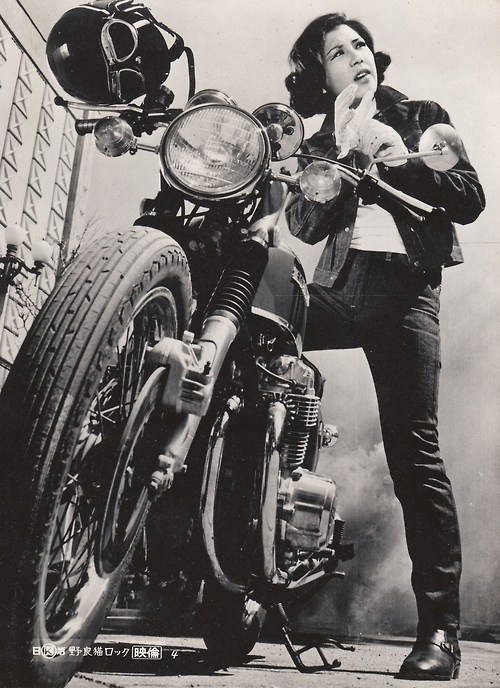
This series and what I own (gifts of missing entries always welcome):
- Girl Boss Blues: Queen Bee’s Counter Attack [ 1971 | IMDB ]
- Girl Boss Blues: Queen Bee’s Challenge [ 1972 | IMDB ]
- ✓ Girl Boss: Guerilla [ 1972 | Wikipedia | IMDB ]
- ✓ Girl Boss: Revenge [ 1973 | Wikipedia | IMDB ]
- Girl Boss: Escape From Reform School [ 1973 | IMDB | GCDb ]
- Girl Boss: Diamond Showdown [ 1974 | IMDB ]
- Girl Boss: Crazy Ball Game [ 1974 | IMDB ]
Also on this disc is an interview with director Norifumi Suzuki. It contains enough fascinating information that should be transcribed (not that dedicated at this moment). The lead actresses that he employed were actually just found in local bars and had enough attitude to actually pull off these films (and when he found out that Ike was only 16, he warned her not to tell anyone). He is confounded by the continued popularity of the films, calling them “not very good” and expected them to last only during their run, then disappear. He was also non-plussed with the love for the fashion that the actresses wear. My god, the fashion really is outstanding. He said the girls, working on the limited budget, picked their own wardrobes from discount stores.
These movies really are a great snapshot of that culture. The Stray Cat Rock has a nice, brief summary. While researching-the-genre/looking-for-online-pics-to-steal for this blog entry, I found a few excellent articles on the Real Life history of the girl boss. Each site linked to another which referenced another etc.
First: Sukeban: 20 Amazing Photographs Capture Badass Girl Gangs in Japan From the 1970s and 1980s. This has photos of the actual girl gangs that existed at the time. They spawned from the post-WWII guy gangs (bancho/boss) that refused their entry. The guy gangs were dying out in the 1970s and so spawned the girl gans (sukeban/girl boss, probably shortened zubeko bancho).
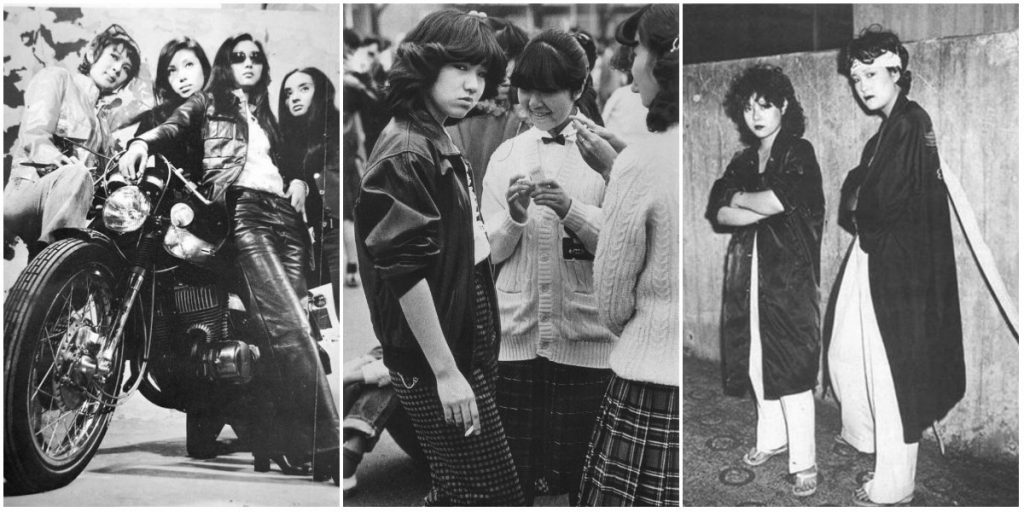
The True Story Of Sukeban: Violent Girl Gangs Of ’70s Japan has good historic info with mostly pics from movies but a few street-wise photos. The uniform consist of school girl uniforms with longer skirt and sleeves to hide weapons, exposed midriffs, and permed hair which was rebellious (?!).
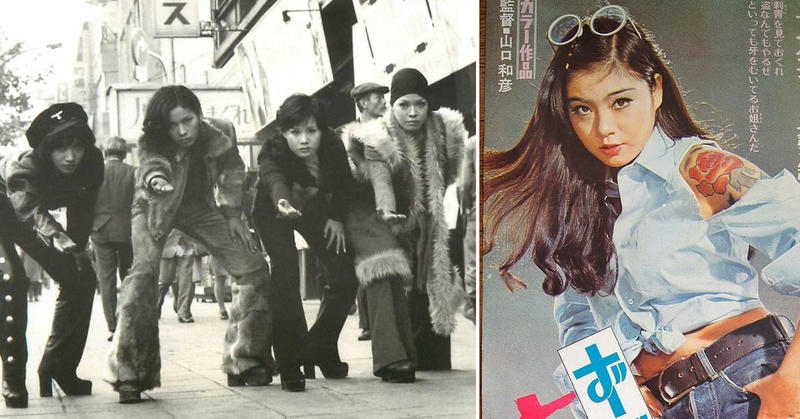
Also linked from those is jailhouse41 over at tumblr, which is a good source of pics (but no history).
Disclaimer: Subtitle and pronunciation and whatnot have probably messed up my transcription of names etc. I’m western and still just don’t have the ear for Japanese names. I also made several attempts to Google translate the gang names with decidedly uncertain results.
This movie was more grim/gritty than the Blossoming Night Dreams one. Different series, yes, but a shock to the system after fun nonsense. The story starts: chicks break out while on a prison bus. One of the girls’ gang members executes the plan; all are benefit. Although going separate ways, the different street punks end up in Osaka. During the diaspora, the rebel outsider (Miki Sugimoto as Komasa Kanto) gets chosen as a bancho by three of the escapees, each of whom provides a poetic summary of their lives and crimes, presented with the open-palmed sukeban greeting show above:
- Momoko (Hiromi Sairaiji) – Party animal, childish.
- Suzue (Misuzu Ôta) – Cop’s daughter, chains worn like necklaces.
- Ranko – Slutty, shaved head but wears afro wig, was training to be a nun.
They become a gang called Gypsies. Two other main characters, on the bus and key for the rest of the movie will later be found in Osaka:
- Ryoko – Head of the Korokikudan (“korokikudan” = “the stage to listen”? “kikudan” = “chrysanthemum”? “koro kikudan” = “roller”?) gang in Osaka. Stabbed in the hand by Komasa after she, Ryoko, gets sassy. She’s kind of an ass. Swears revenge (yes, the hand-stabbing is reciprocated later also with, horribly, some rape-adjacent stuff).
- Maya (Reiko Ike) – Head of Umeda Gakurankai (“gakurankai” = “academic orchid association”?) gang in Osaka. Respected.
In Osaka, the Gypsies steal food and money, catch pigeons with nets and sell the cooked skewers to people on the street as… not pigeon meat. They meet and fight Maya’s Umeda gang, younger girls dressed in school clothes as described in the links above, but they are without their boss. Elsewhere, they come across Ichiro. He is ostensibly shining shoes but actually sells pornographic photos of him and various girls “shining shoes” (pre-internet and pre-porno-mag). The Gypsies pass by and he falls in love with Komasa. This starts the eventual and dramatically disruptive love triangle (plus one) of him, his brother Tatsuo, and Tatsuo’s still-missing girl friend Maya.
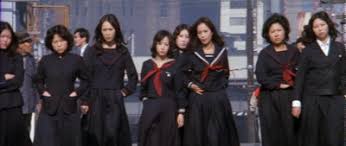
Elsewhere in the city, we first encounter Tatsuo and other members of his Hokuryukai (“ryukai” = “gathering”) gang shaking down guys on the street for protection money. They sell pins to wear that will mark the buyer as benefactors of the Hokuryukai gang. My notes are a little unclear here [ed. rewatch!] so the Hokuryukai gang may also be known as the Sanseikai (“sanseikai” = “approval”) gang. Hokuryukai is the name of Hokuryukai Industries which pays the gang to do their dirty deeds (the names seemed to be interchangeable, or just a misunderstanding on my part?). A percent of the money that Sanseikai makes on the street is the paid up to Hokuryukai for protection.
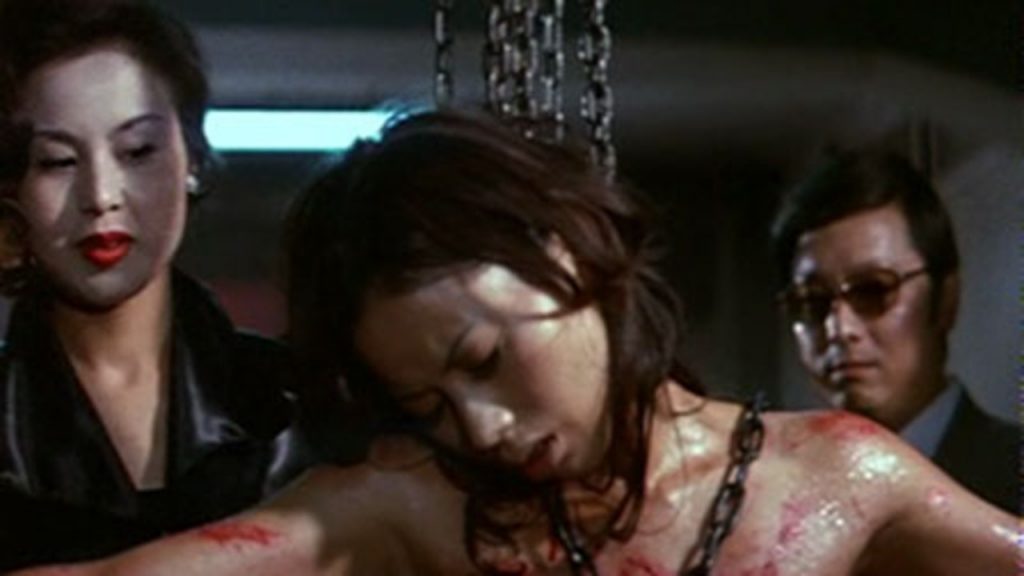
The simple shakedown that we see is one of the key triggers that propels the movie forward. One of the men they were roughing up for money ends up being the son of a government tax assessor who cooks books for Hokuryukai Industries, i.e. Tatsuo’s boss. Tatsuo is then punished, so his brother Ichiro gets revenge by seducing the minister’s wife, filming her, and blackmailing her husband. This plus the Gypsies’ thefts from Hokuryukai gaming dens puts them all in Hokuryukai’s sights.
Another dramatic trigger is the crossed relationships between the four main characters: Ichiro has a harmless, comical relationship with Komasa; Komasa gives herself to Tatsuo in gratitude for saving her from being tortured by Hokuryukai Industries; Tatsuo long ago saved teenage Maya from being raped by Yakuza thugs. During the struggle to defend her, he broke his arm and ruined his baseball career (!) so then had to turn to them for work and has been indebted since. When Maya finally returns to Tatsuo, for the first time since the break out, she walks in on him and Komasa.
One more conflict is the aforementioned between Komasa and Ryoko who Komasa had fought in the opening scenes. Ryoko is in cohoots with the Yakuza and helps them kidnap members of the Umeda gang (Maya’s outfit) to be used as sex slaves in the corporation’s Turkish baths. One of the many illicit businesses that Hokuryukai Industries runs and the Sanseikai protect.
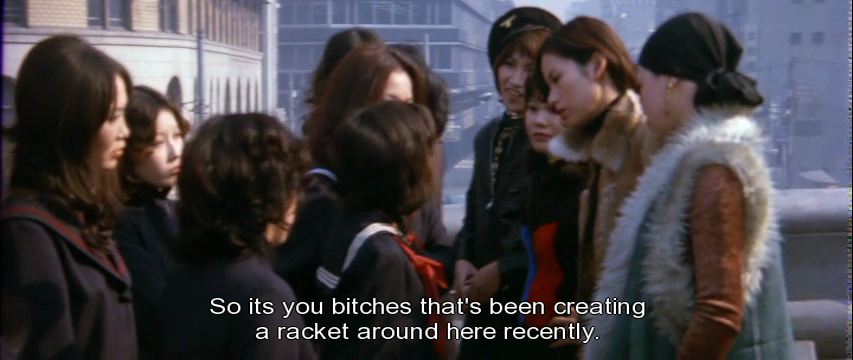
Similar to how Tatsuo’s shakedown of the assessor’s son created a clash between those two groups (the corporate Yakuza and the Sanseikai street gang), Tatsuo’s tryst with Komasa creates a clash between him, his brother, and Maya and the Gypsies, and Ryoko indirectly attacks Maya by selling her gang members into slavery. The separate dramatic threads combined to create a more unstable whole.
There is a final showdown at the Turkish bath house with Komasa, Maya, and the Gypsies defeat the Hokuryukai and save the captive girls. The final scene has Komasa, Maya, Suzue, and Ranko driving four stolen vehicles (a fire engine, a hearse, a police car, and a garbage truck) out of town and mocking each other for their ridiculous choice of getaway cars.
A couple of the trailers included on this disc were a little different than those included with the previous:
- Delinquent Girl Boss: Blossoming Night Dreams
- Rica 3 (included on the previous disc)
- Convent of Sinners – Period piece with nuns sleeping with each other and with local priests etc. Filmed stylishly, soft lighting, very Cinemax. This was directed by Joe D’Amato who also directed the decided not stylish film from the previous set of trailer: Porno Holocaust.
- The True Story of the Nun of Monza – More softcore trash. Similar story (nuns, sinning) but different director. Interestingly, The Nun of Monza was an actual historical figure who had illegitimate children and murdered another nun. It would be good source material for an opera, actually.
Updated 6 May 2021
Every few months I get it in my head to organize DVDs and collections and do some general research. In my recent researching, I found the site DVDLady which had 11 flix that were missing from my library (another resource, though not ordered from, is the Pinky section of JapaneseSamuraidvd.com). The first batch of orders came in and–though I expected bare-bone packaged DVD-Rs–they’re quite bare bones.
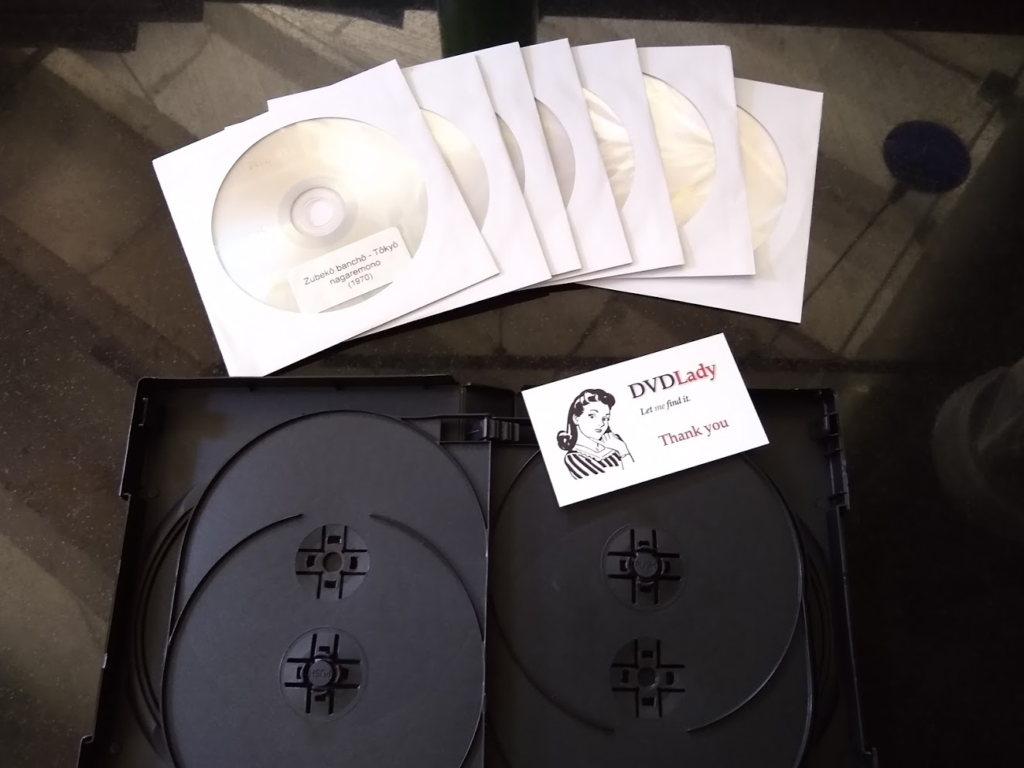
The secret to searching for these films is to try various combinations of Japanese titles, Japanese AKA titles, English titles, and any version of the English translations of the Japanese titles. It’s a fun scavenger hunt. Another semi-clever technique is to reverse-search the posters or original DVD (cassette?) covers.
I started watching one to do a litmus test for quality (Delinquent Girl Boss #2 Tokyo Drifters AKA Zubekô banchô: Tôkyô nagaremono). It’s good-not-great but very watchable. No complaints.